Furnace Season is Here
Why Should You Buy a Furnace with Town & Country?
We’re 100% locally owned. Town & Country is owned by a group of local men who live in and around Regina contributing to the community in a variety of ways. Many of our owners are tradespeople including plumbers, sheet metal workers, and electricians. They not only act as owners but as mentors for our young apprentices.

We’ve done the research so you don’t have to? What do we mean by that? We’ve researched our products seeking out the highest quality, best warranties, and most serviceable products. We choose to install products with long life spans but also products that can be serviced for a reasonable cost so that your investment goes a long way.

Our service department is housed within our business. That means that when you call us for service during regular business hours we answer the phone personally and our dispatch team sends out our service technicians.
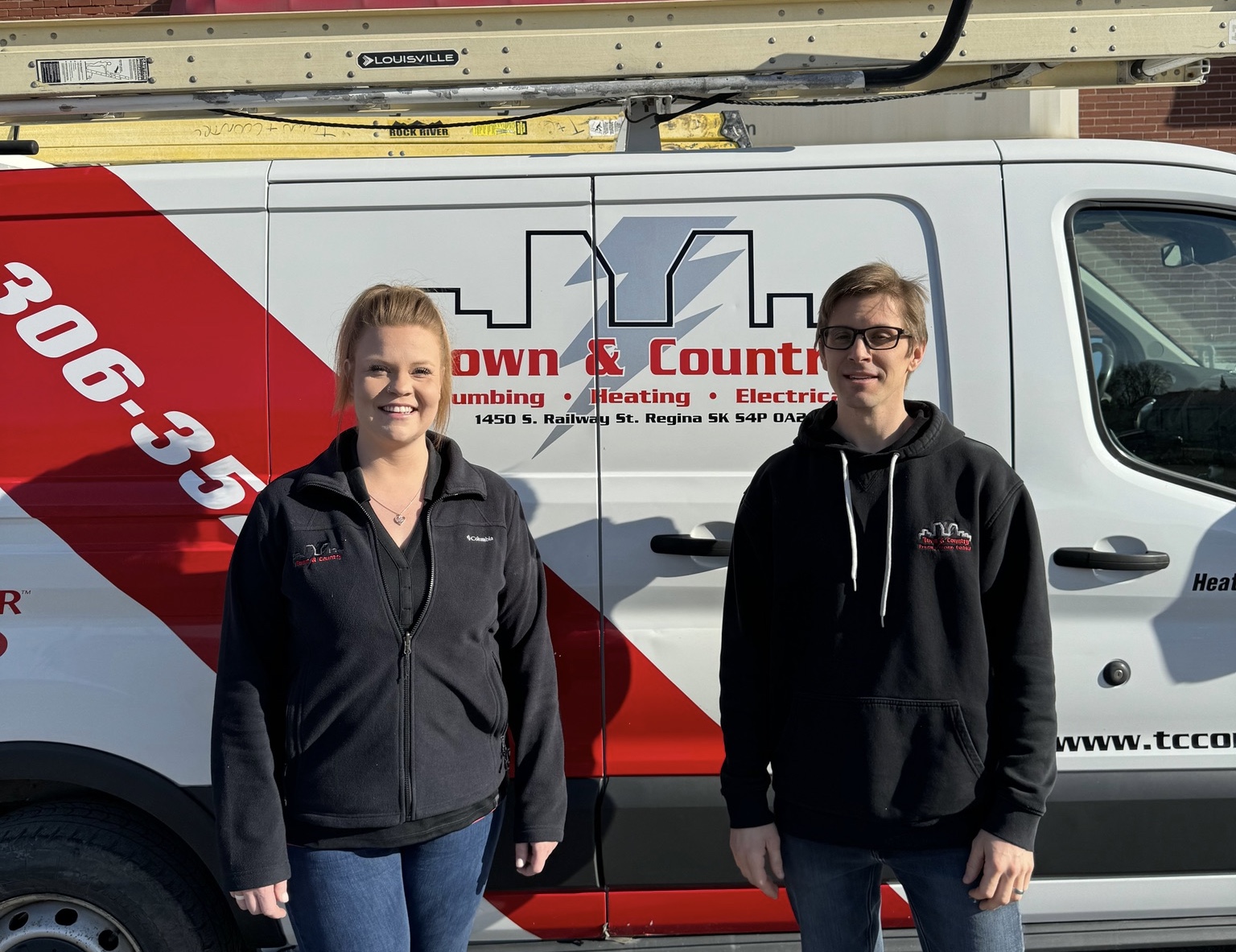
We have a team of skilled, certified trades people. When we come to your home to do an install you can be assured that the team will be lead by a qualified journeyperson and it’s likely they will have an apprentice with them. We bring years of experience to every install and often we are also in the process of training our next generation of installers. We are dedicated to quality craftsmanship and expert installations.
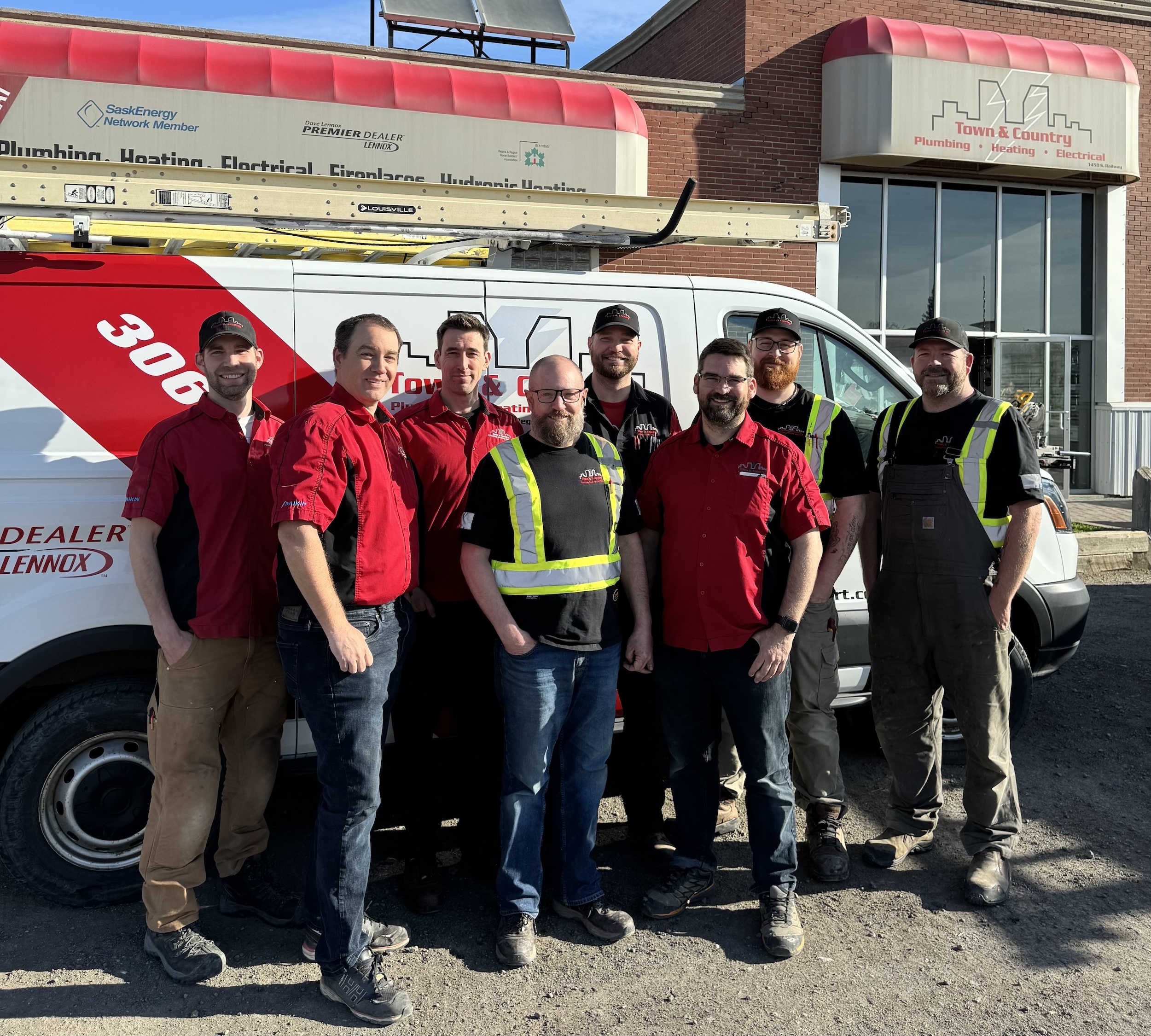
We’re firmly established. Town & Country has been serving the people of Regina and area since 1963. We’re one of the longest running plumbing and heating companies in Regina. You can trust that if you purchase your furnace with our company we will still be around to honour your warranty and keep your furnace running smoothly with regular maintenance.
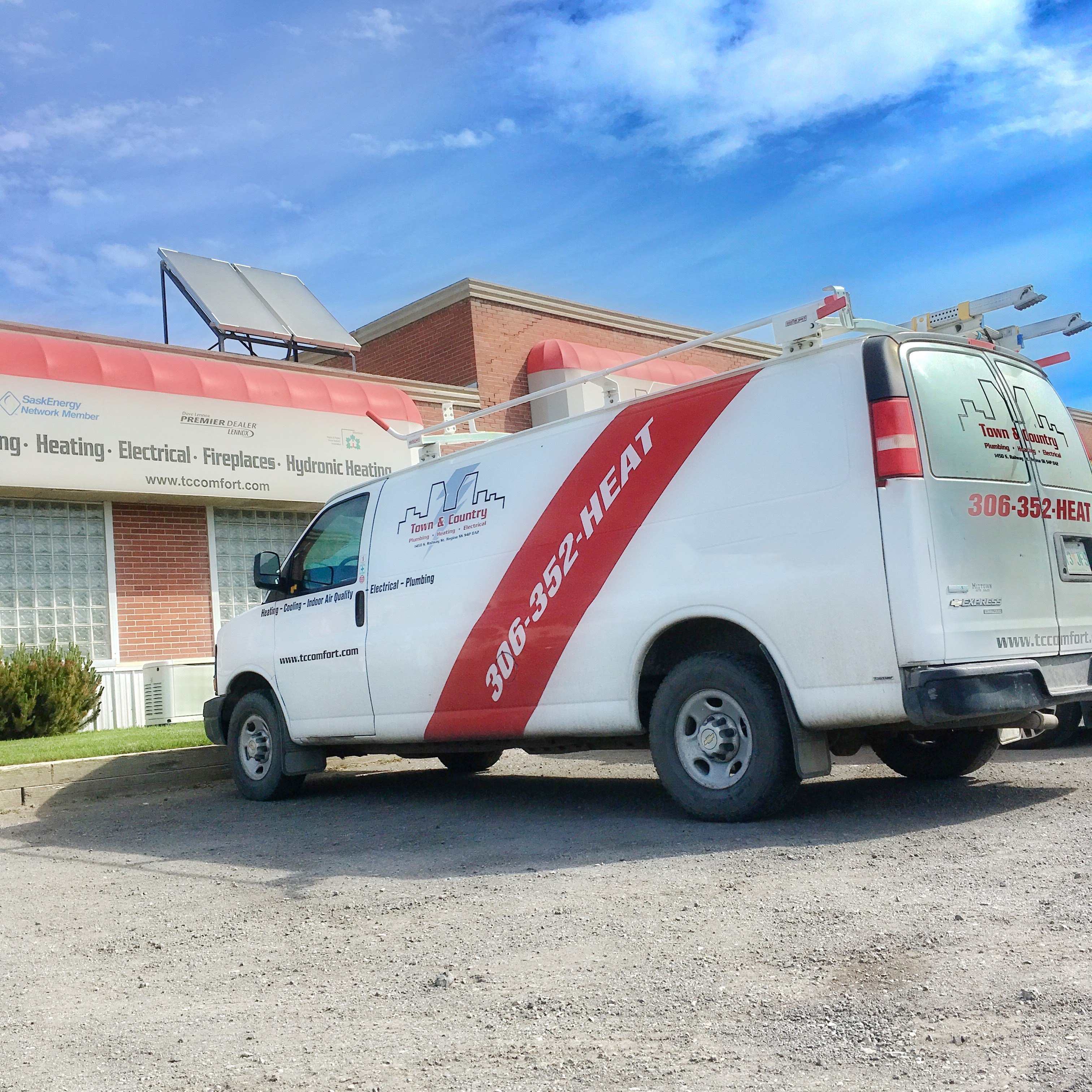
We offer a Customer-Centric approach with personalized solutions, tailored to your home’s specific needs. Our Home Comfort Consultants come to your home and take the time to understand your requirements and recommend the best system for your space, ensuring comfort and satisfaction.
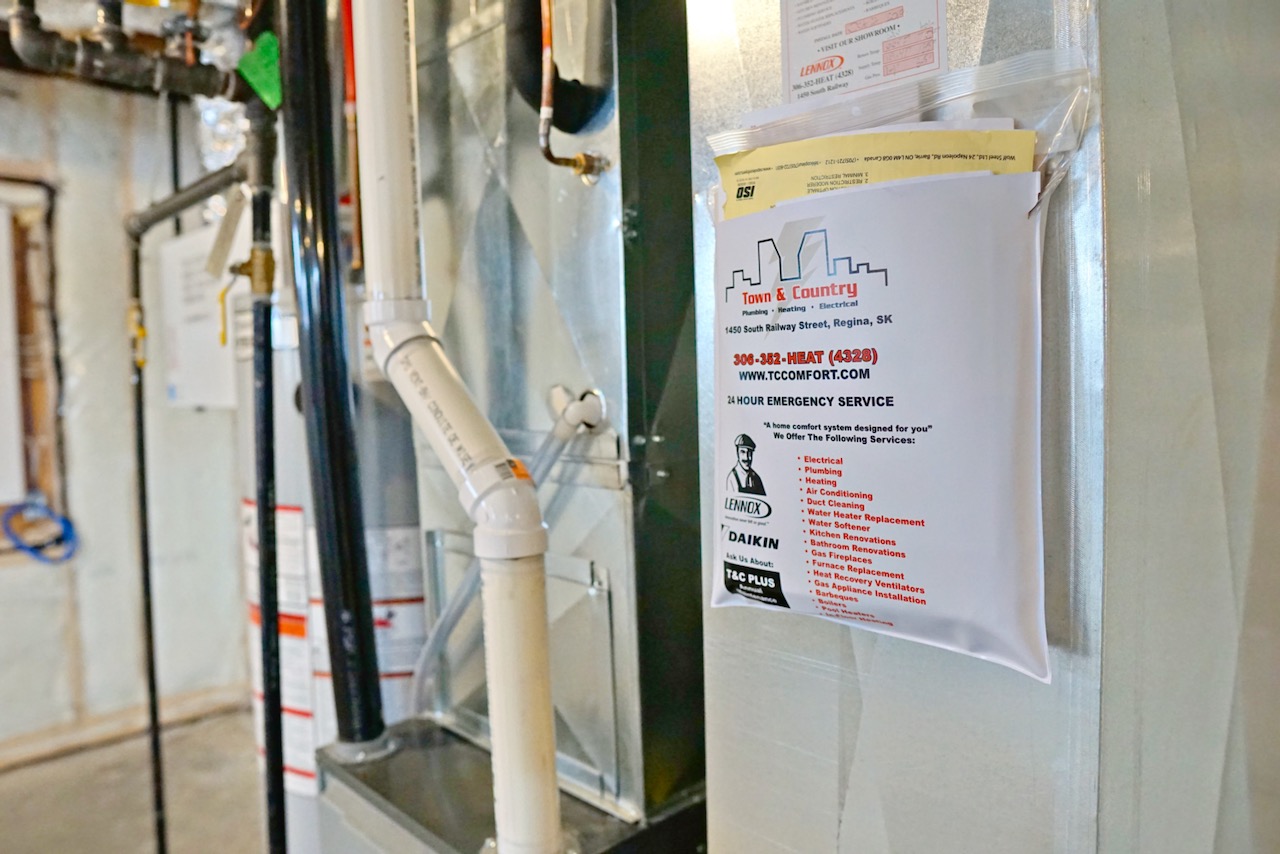
Looking for a quote? Get in touch today and we will put our team to work to make your home as comfortable as we can.
Choosing an Air Conditioner
When choosing an air conditioning system for your home, Town & Country offers two main solutions. The first option, and the one most people think of, is a whole home cooling system. This system uses the current duct work to distribute cool air through the whole home.
The second option we offer is a mini split system. These systems have an outdoor unit as well as indoor units. The indoor units are placed where you want the cool air to be dispersed. These units offer the advantage of zoning and they don’t require duct work. That means that if your home uses a boiler and radiators for heat, you can take advantage of a mini split system to offer home cooling. Let’s explore these options a little deeper.
Whole Home Air Conditioning
As the name implies these units work to cool your complete home. This type of system is often referred to as central air conditioning. It consists of an outdoor unit and a coil that is usually installed above your furnace. Because these units use your furnace and your home’s duct work they are able to blow cool air throughout your whole home just like your furnace would blow warm air in the winter.

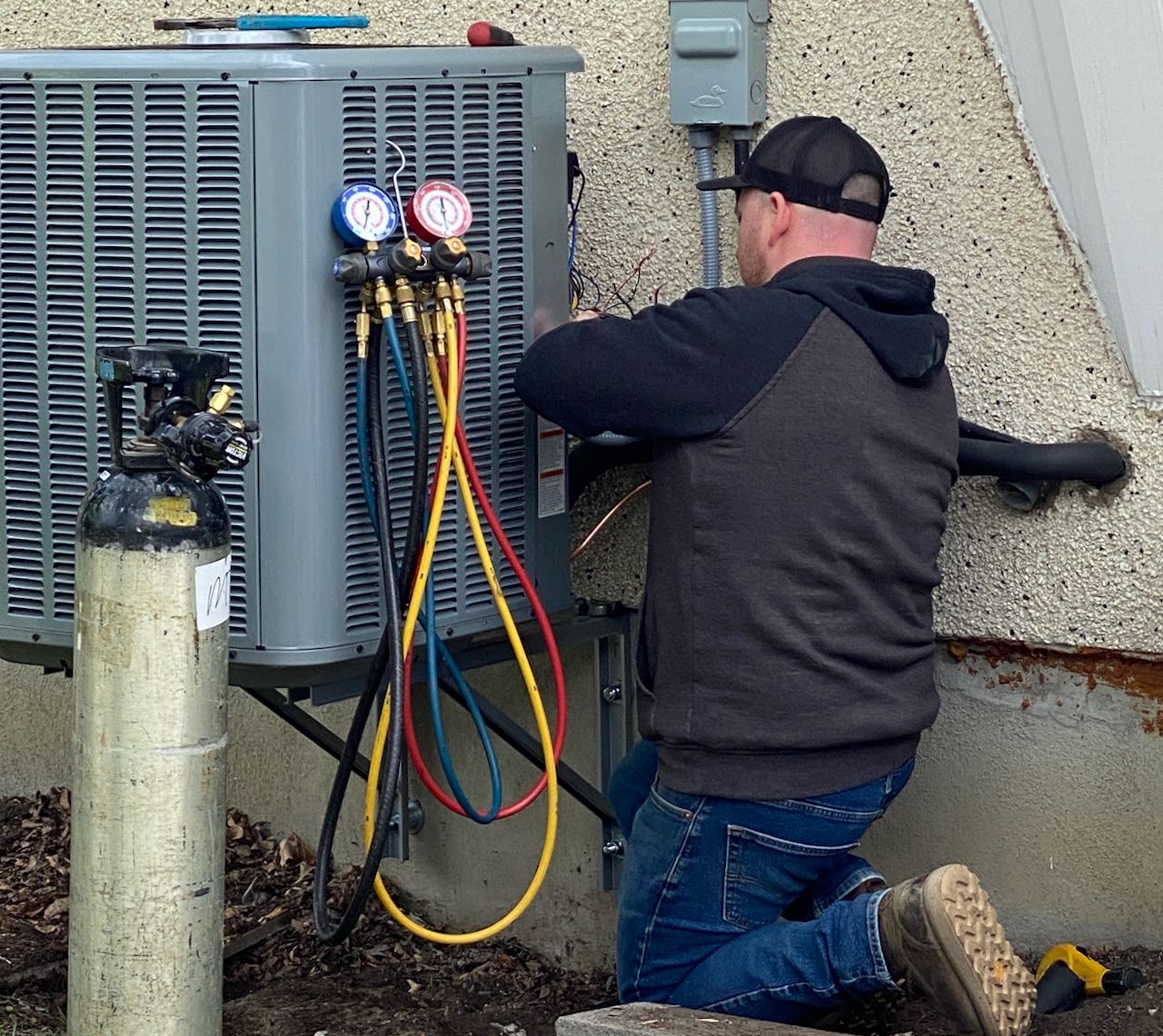
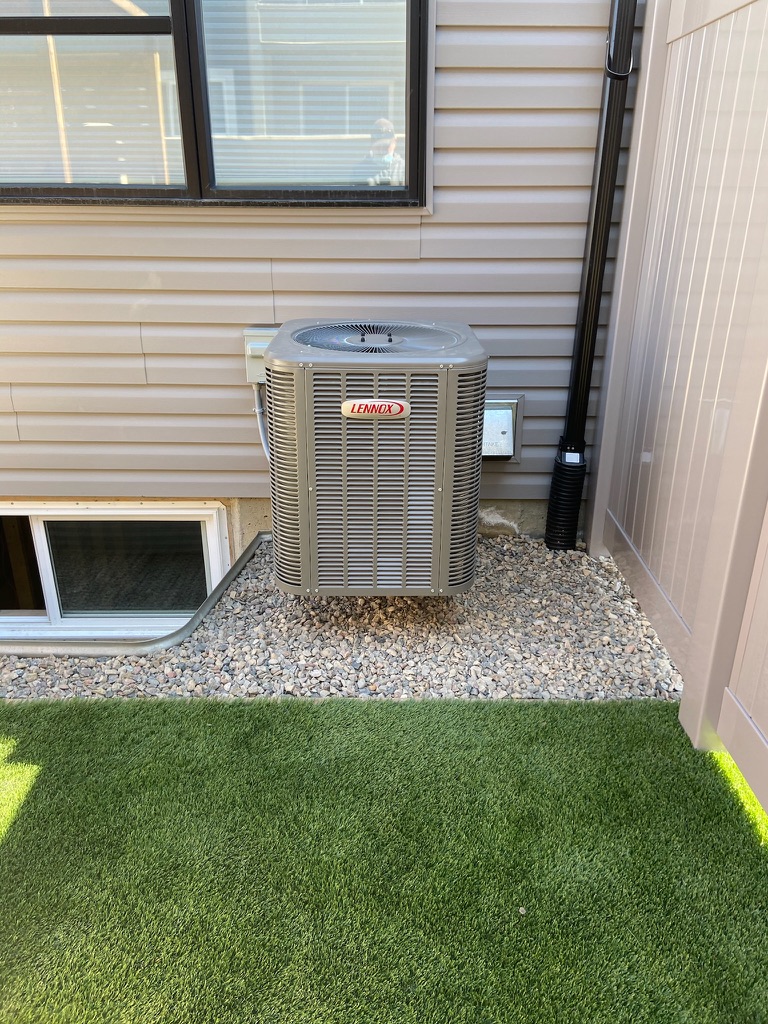
Advantages:
-Whole home is cooled
-Great cooling capacity
-Most cost effective solution
-Takes advantage of any air purification systems or filters that your home already has
-Good energy efficiency
-Efficiency can be further improved with a smart thermostat
Ductless Air Conditioning
These systems are often referred to as mini split systems because they consist of two main components. There is an outdoor unit and an indoor unit. The indoor unit is mounted on the wall of the room that you want cooled. It is usually controlled by a remote control. Each room that you want cooled has a separate indoor unit that allows you to have different temperatures in different rooms. So for example your children’s bedroom could be set at a different temperature than the primary bedroom. Or at night you could just cool your bedrooms for sleeping while allowing other rooms in the house to linger at warmer temperatures thus reducing the energy requirements.
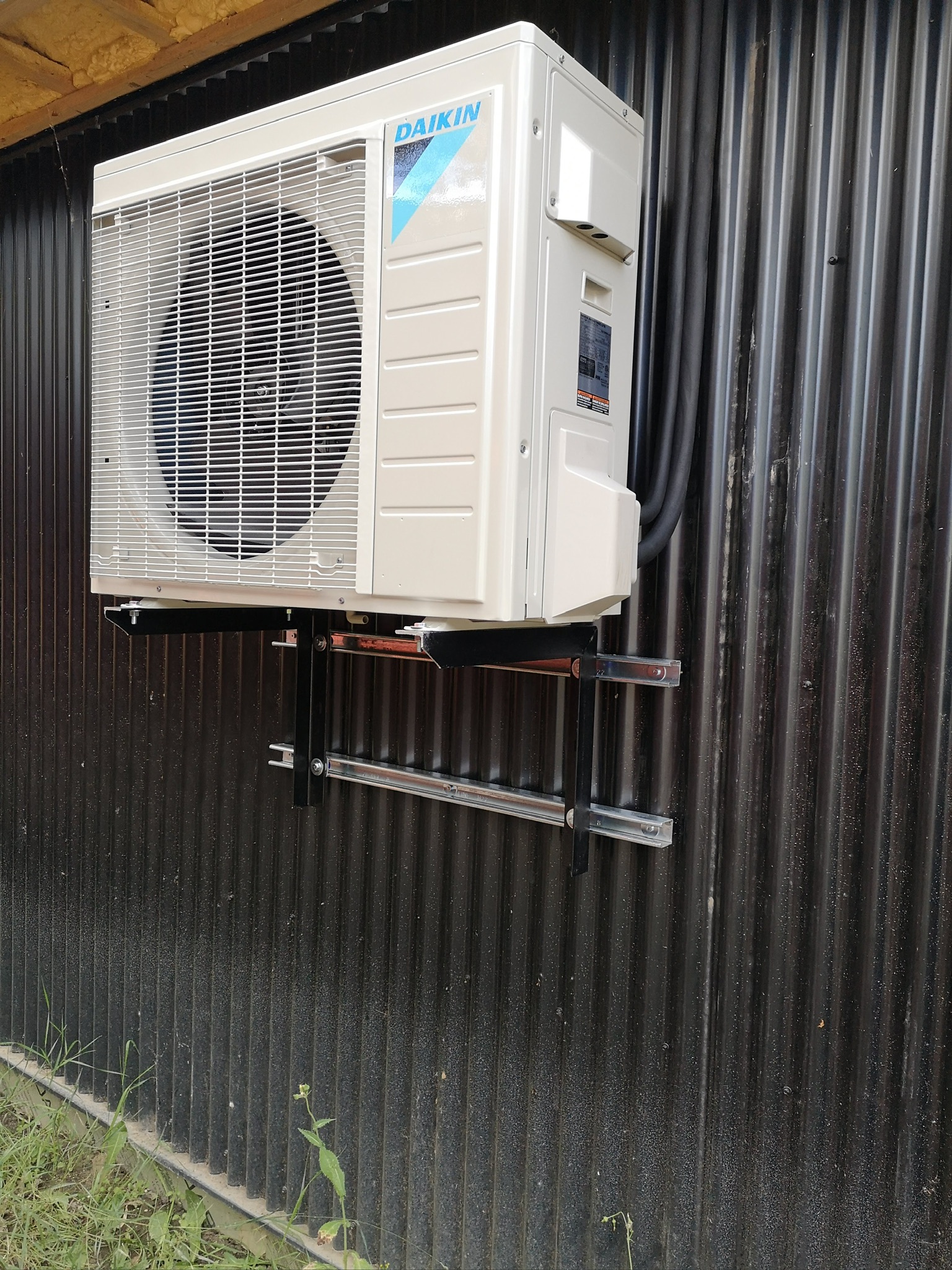
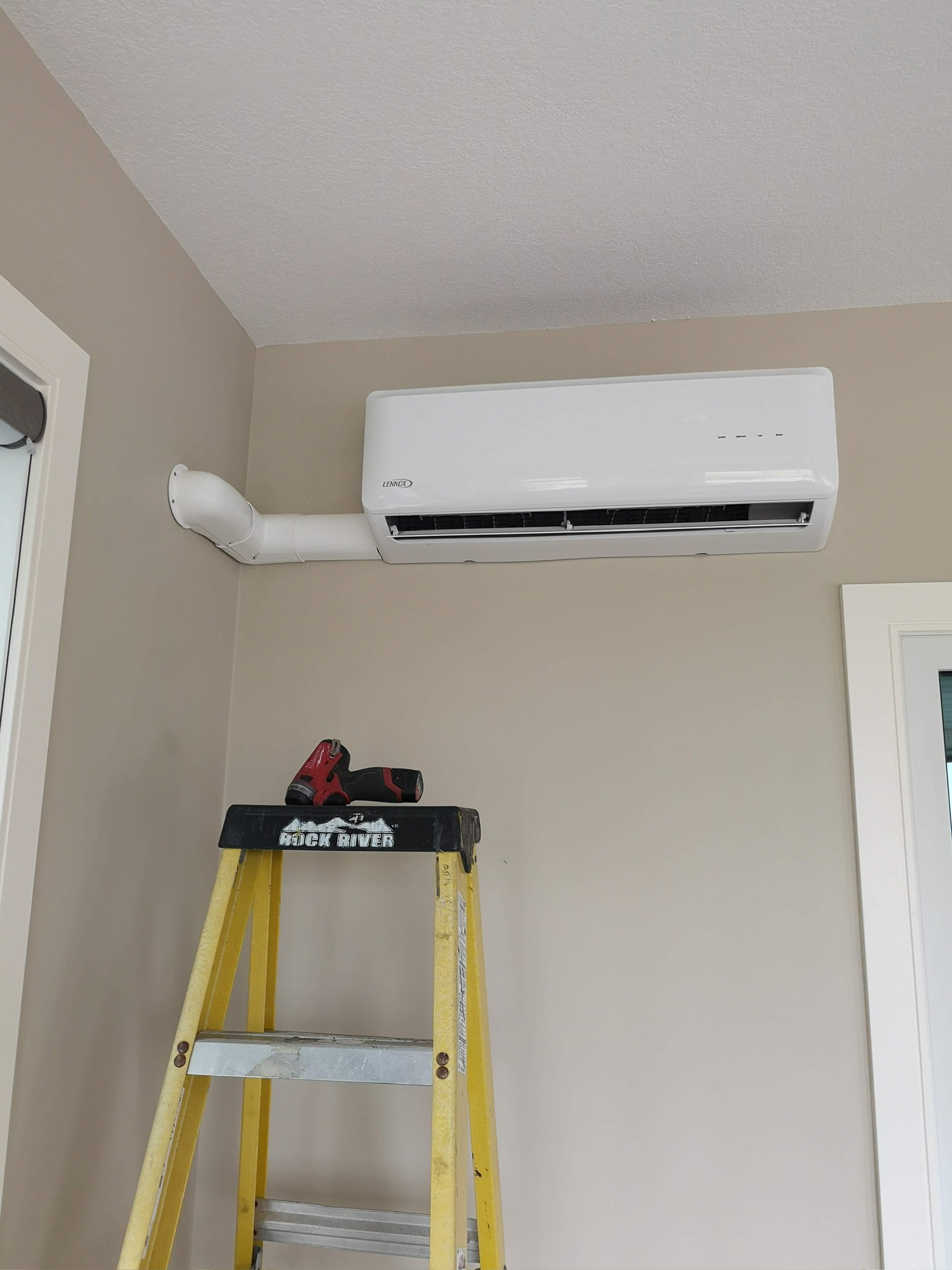
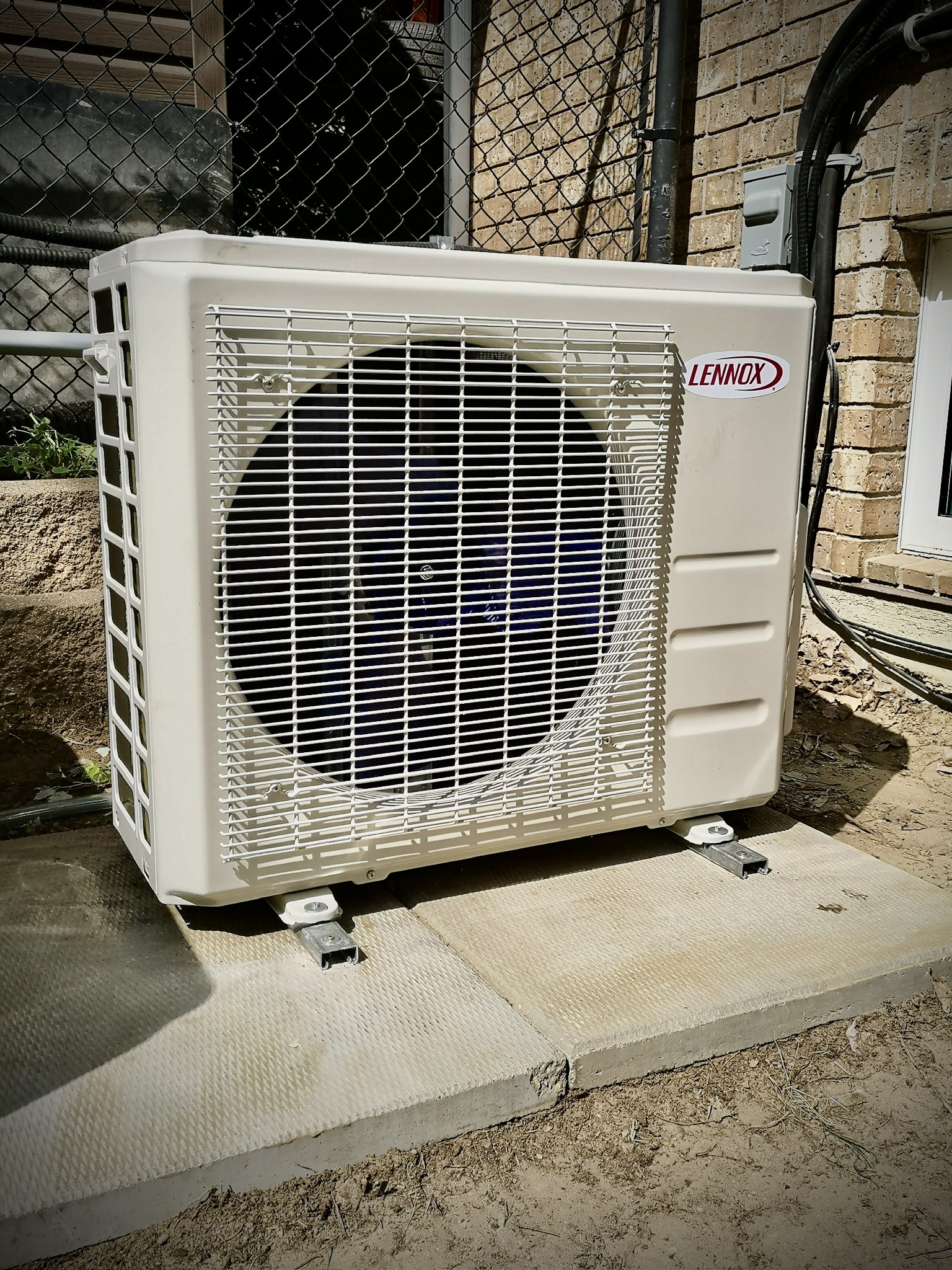
Advantages:
-Ductwork is not required
-Selected rooms are cooled
-Quiet
-Allows more control over the climate of individual rooms
-Cool bedrooms at night while rest of house is allowed to sit at a warmer temperature.
How to Choose
The primary factor that will weigh pretty heavily in the decision of how to cool your home will be whether or not your home has duct work. However, you could still choose a mini split system if you wanted to create some zoning or if you have an area of your home that doesn’t have duct work like an addition that perhaps has infloor heating. Whatever your needs are, our team will take the time to help you make the decision that bests suits your situation. You can give us a call or use the link below to request a quote. We’re your local experts.
Continuous Fan Operation
Definite advantages can be obtained by providing continuous fan operation, particularly with the use of Fresh-Air Ventilation Systems, Energy Efficient Air Cleaners and Power Humidifiers. Today’s new and efficient motors can save you hundreds of dollars while providing better indoor air quality. Keeping your furnace fan running in the summer months can enhance home comfort, by circulating the air in your home. You’ll feel cooler and more comfortable.
Thermostat Maintenance
Conventional type: This type of thermostat does not require any maintenance.
Note: If the room is dark a small blue flash may be noticed when heating or air conditioning comes on. This is normal.
Programmable / Electronic types: Annual replacement of batteries is necessary for proper operation where applicable.
Notes:
- This type of thermostat normally maintains the temperature within half of 1ºC, unlike conventional thermostats, which may vary up to 3ºC. The furnace or air conditioner may cycle more rapidly especially under low load conditions. This is a normal operating condition.
- Programmable Thermostats can conserve energy and save you money.
- Do not set back your temperature more than 3°C. A temperature difference of more than 3ºC will not provide any savings.
Media Air Cleaner Maintenance
Replace or clean filters every two months. Some systems require the filter to be replaced more often, depending on environmental conditions.
Filters may need to be changed more frequently in newly constructed homes, homes under renovation, or homes where several pets live. Call us for filter media.
Humidifier Maintenance
- Turn Humidistat to OFF position, then turn water supply off, and close humidifier damper every Spring.
- Turn water supply on, then turn humidistat to ON position, and open humidifier damper every Fall.
Notes:
- Only operates when the furnace fan is running, and the humidistat is calling for humidity.
- Acceptable humidity levels vary depending upon outside temperature but they usually range between 30% and 50%.
- Place conditioning tablets in water reservoir to prevent bacteria buildup.
Heat Recovery Ventilation Systems
- Check intake and exhaust filters monthly. If required, vacuum the filters or rinse under a water tap. Mild detergents may be used but DO NOT use solvent cleaners.
- Check the core every six months for dirt accumulation. If required, slide the core carefully out of the case. Clean the core with water and mild detergents ONLY! DO NOT use solvents or other cleaning agents; the water temperature must not exceed 65ºC (150ºF). DO NOT use a high-pressure hose, and be sure to replace the core CAREFULLY. It must be properly aligned with the service instructions facing outward and the arrow UP.
- The Drain Pans should be wiped clean with water and mild detergents. AVOID solvent-based cleaners!
- Set Dehumidification Control to Summer Setting or Winter Setting dependent on applicable season.
- Check outside hood to make sure free and clear of debris.
Electronic Air Cleaners
- Gently clean the electronic air plates every two months. Use approved cleaner.
- Clean pre-filters every two months.
Caution: To avoid improper operation, be careful not to bend plates.
Registering Your Plumbing & HVAC Equipment
Equipment registration activates your extended parts warranty. It is also important to record your product purchase to ensure that you can be contacted in the event that there is a recall or other important product information to share.
With online product registration available, the process is quick and convenient. To register your furnace or air conditioner, all you need is the serial number, model number and installation date for each piece of equipment.
Registration must be completed within 30 days to activate the extended warranty.
Click here for Lennox Equipment Registration



